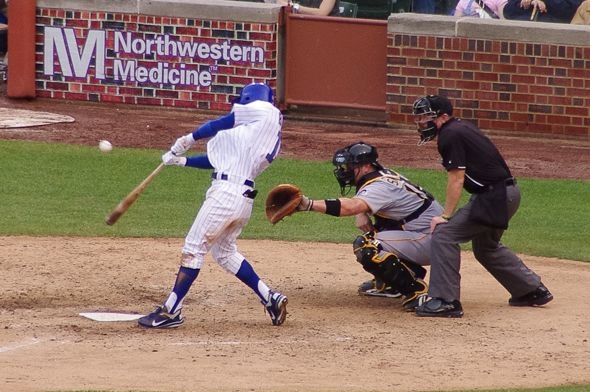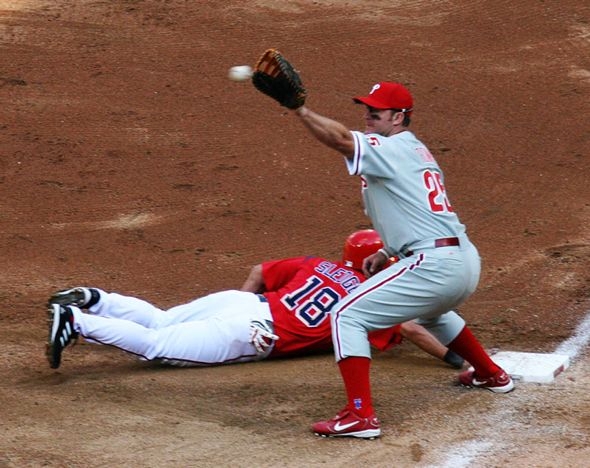The Ins and Outs of Baseball Uniform Design

Courtesy of Keith Allison via Flickr
Roman Mars’ podcast 99% Invisible covers design questions large and small, from his fascination with rebar to the history of slot machines to the great Los Angeles Red Car conspiracy. Here at The Eye, we cross-post new episodes and host excerpts from the 99% Invisible blog, which offers complementary visuals for each episode.
This week's edition—in which Paul Lukas of Uni Watch talked with Jesse Thorn, host of the NPR show Bullseye, owner of Maximumfun.org, and lifelong San Francisco Giants fans, about baseball uniforms—can be played below. Or keep reading to learn more.
Uniforms matter. When it comes to sports, they might be the only thing to which we’re actually loyal. Jerry Seinfeld may have said it best:
Sports uniforms are packaging. But unlike any other packaging, if the product inside changes or degrades, we remain loyal. Players come and go, but change the uniform, and you’ll hear about it.
Perhaps as a result, people take notice when players put their own personal style into their uniforms. In baseball, in the face of huge opposition from curved-brim loyalists, some players take the bold stance of wearing a straight brim. Among them is George Sherrill, who is nicknamed “The Brim Reaper” for his flat-brimmed style (above).
But for people who really geek out about baseball uniforms (like Paul Lukas from Uni Watch) the space below the knee may be the most interesting. It is here that players have the most choices, can make the biggest statement, and be, in the words of Lukas, masters of their own “uni-verse.”
Most players today choose to wear their pants long (like George Sherrill is doing in the top photo), but if you truly want to honor baseball’s hosiery heritage, you should wear your pants up over your calves and a sharp pair of stirrups.

Courtesy of Devorama via Flickr
A stirrup is like a sock, but one that loops underneath the arch of the foot. A century ago, baseball pants were knickers, and what you wear with knickers are stockings. But in the early days, baseball was a pretty rough and tumble game. Players were liable to get cut up by opponents’ spiked shoes—and if you got spiked in the shins and started bleeding, the dye from your stockings could get in the wound, and, it was feared, you could get blood poisoning. (These were the days before colorfast dyes.)
So someone had the idea that if you wore a white undersock (a “sanitary,” or “sani” for short), you could stirrup on top—thus allowing you to protect your blood while also repping your team colors. The feet are cut out of the stirrup so as to keep from having to cram two pairs of socks into your cleats.
Originally, the foot opening in the stirrup was tiny, just enough for your foot to fit through. But almost immediately players began pulling it up and stretching it higher, thus exposing more and more of the sanitary undersock. By the 1960s, players like Frank Robinson of the Baltimore Orioles were actually cutting the bottom loop of the stirrup and adding more fabric to it, so that the stirrups could be pulled even higher than manufacturer had intended.
Pitcher Josh Outman carries on the tradition of sporting stripe-y stirrups:

Courtedsy of Keith Allison via Flickr
Jim Thome didn’t go for long stirrups, but he remains one of baseball’s all-time best “blousers” (he tucks his pants into his socks).

Courtesy of dcJohn via Flickr
To learn more, check out the 99% Invisible post or listen to the show.
99% Invisible is distributed by PRX.
